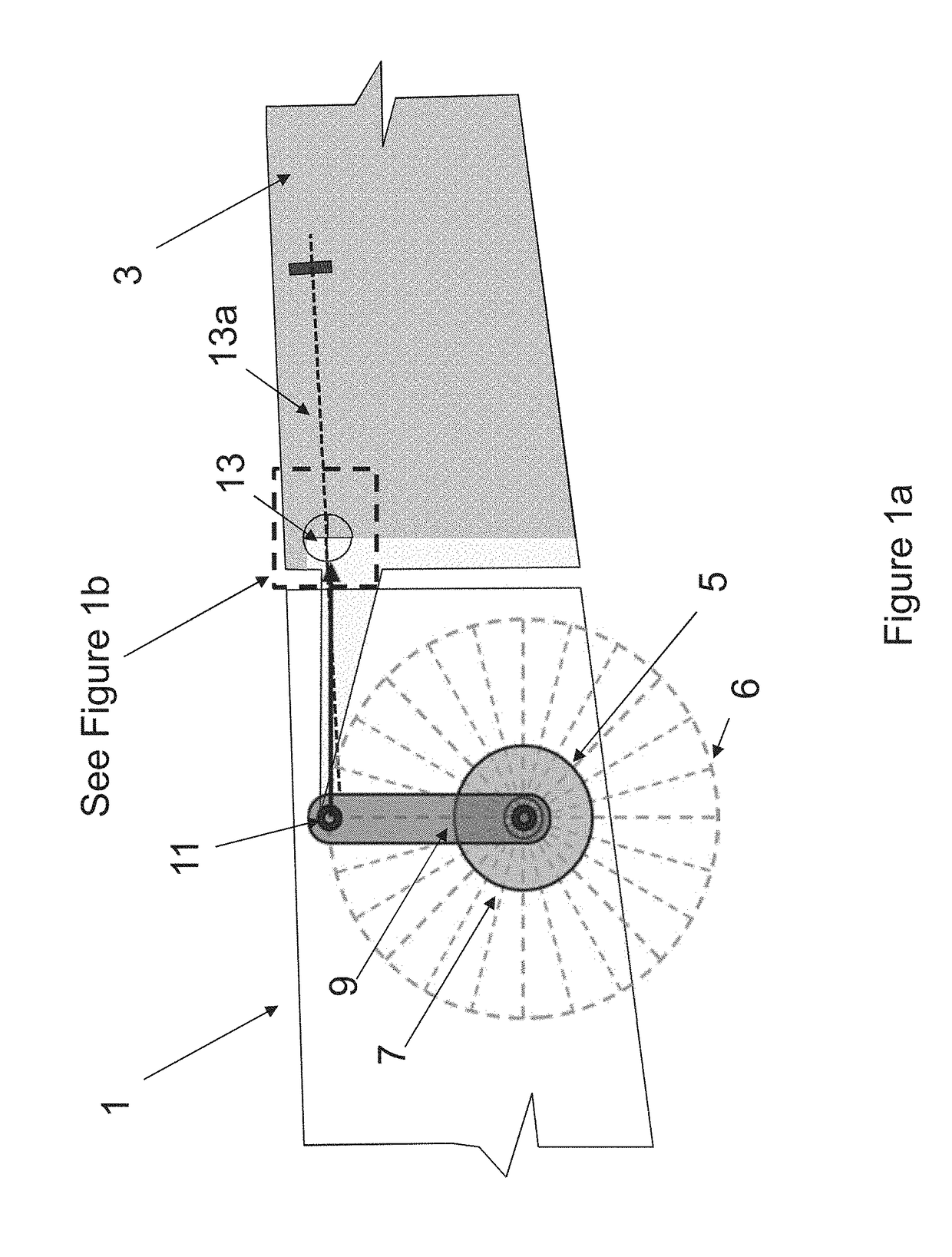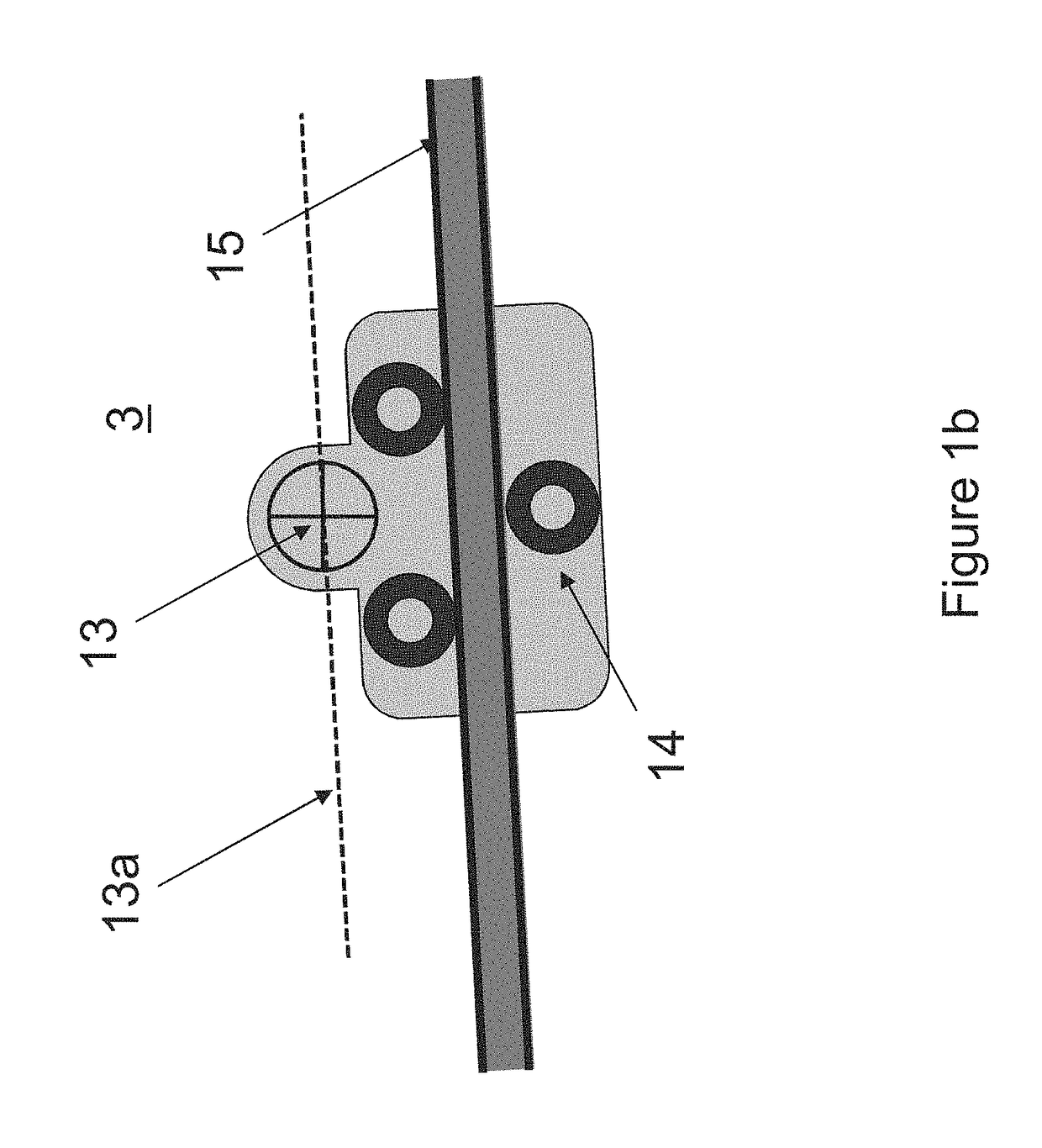Arrangement for effecting movement of a wing tip device between a flight configuration and a ground configuration
a technology of wing tip device and flight configuration, which is applied in the field of aircraft, can solve the problems of effectively limited maximum aircraft span and technical challenges
- Summary
- Abstract
- Description
- Claims
- Application Information
AI Technical Summary
Benefits of technology
Problems solved by technology
Method used
Image
Examples
first embodiment
[0032]FIG. 1a shows a schematic side view of a wing 1 and wing tip device 3 according to the invention. The wing tip device 3 is in the form of a planar wing tip extension, but for the sake of clarity only the root portion of the wing tip extension is shown in FIG. 1a. The wing 1 and wing tip device 3 are on the aircraft 2 shown in FIG. 1c.
[0033]A rotary actuator 5 is housed in the wing 1 and comprises a motor 7 arranged to rotate a fixed-length link 9. The link 9 is coupled, at its distal end, to the wing tip device 3 at coupling 11. As will become apparent with reference to FIGS. 2a-h, the coupling 11 is an actuated location on the wing tip device 3, which follows an arcuate locus 6 of constant radius as the actuator 5 effects movement of the wing tip device 3. The arcuate locus is shown in dotted lines in FIGS. 1a, and 2a-2i.
[0034]The wing tip device 3 is rotatable about a pivot 13. The locus 13a of the pivot 13, as the wing tip device 3 moves away from the flight configuration...
second embodiment
[0048]Firstly, rather than a planar wing tip extension, the wing tip device of the invention is an upwardly extending winglet 103. For clarity, only the root portion of the wing tip device 103 is shown in the Figures.
[0049]Secondly, the track assembly 115 (which mirrors the shape of the locus 113a) has a curved region, rather than being substantially straight along its length. This shape of track, together with the relative positions of the coupling 111 and the pivot 113, is particularly advantageous for the reasons set out below:
[0050]The start of the track (closest to the wing tip) comprises a straight portion inclined downwardly from the plane of the wing 101. As shown in FIGS. 3a and 3b, during the initial phase of motion away from the flight configuration (FIG. 3a) the wing tip device 103 translates along this straight portion. This translation has been found to be especially useful in terms of preserving the life of the sealing arrangement and in unlocking the wing tip device ...
PUM
 Login to View More
Login to View More Abstract
Description
Claims
Application Information
 Login to View More
Login to View More - R&D
- Intellectual Property
- Life Sciences
- Materials
- Tech Scout
- Unparalleled Data Quality
- Higher Quality Content
- 60% Fewer Hallucinations
Browse by: Latest US Patents, China's latest patents, Technical Efficacy Thesaurus, Application Domain, Technology Topic, Popular Technical Reports.
© 2025 PatSnap. All rights reserved.Legal|Privacy policy|Modern Slavery Act Transparency Statement|Sitemap|About US| Contact US: help@patsnap.com



